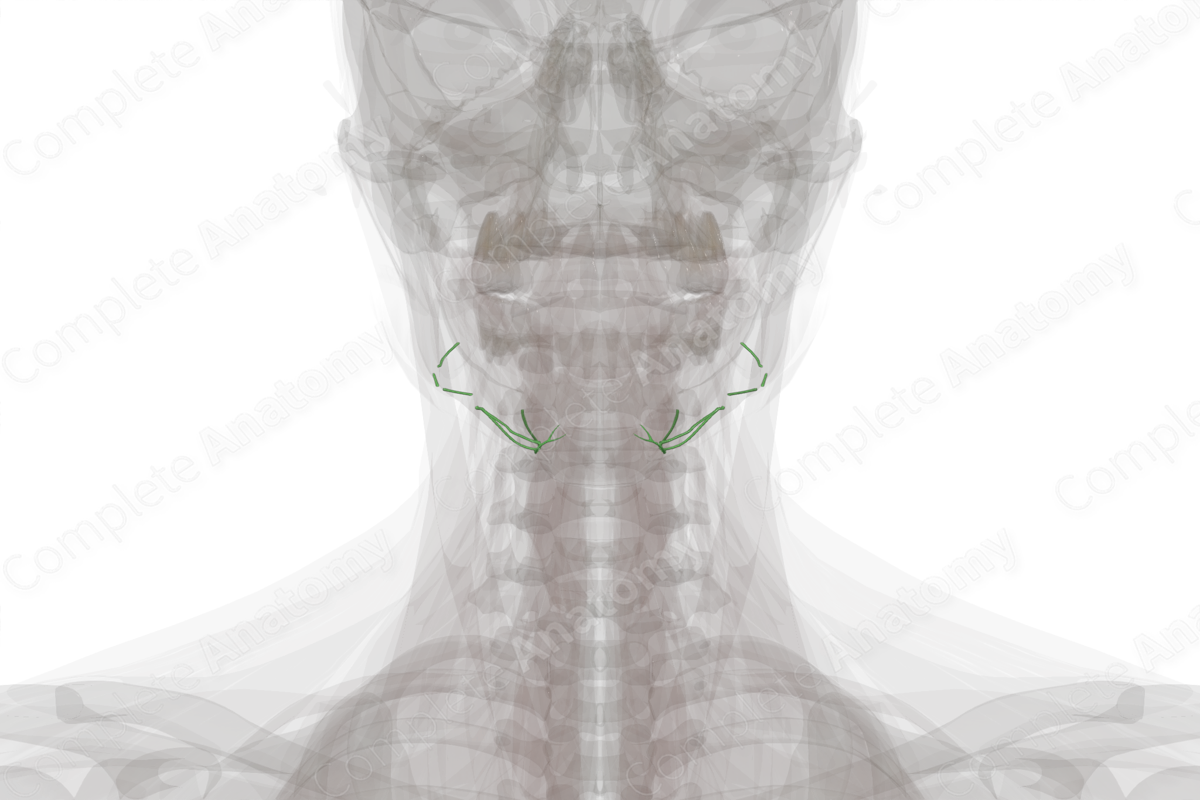
Quick Facts
Location: In the fascial compartment of the submandibular gland.
Drainage: Submandibular gland, sublingual gland, bottom of the oral cavity, tongue, palate, gingiva, teeth, and skin covering the eyelids, lips, nose, and chin.
Direction of Flow: Jugulodigastric nodes > internal jugular nodes > supraclavicular nodes > jugular trunk > thoracic duct (left) or right lymphatic duct.
Related parts of the anatomy
Description
Submandibular lymph nodes and vessels are located within the fascial compartment surrounding the submandibular gland. The nodes are grouped by location and interconnected by a network of vessels.
Collectively they drain a large area of the face, including most of the oral cavity. They are assisted in this role by the lingual and submental vessels.
Before draining into the internal jugular nodes, efferent vessels of superficial submandibular nodes accompany the facial vein while efferent vessels of deeper submandibular nodes accompany the arteries. Both lead to jugulodigastric nodes. From the internal jugular nodes, lymph drains into the supraclavicular nodes, the jugular trunk, and finally into the thoracic duct on the left or the right lymphatic duct (Földi et al., 2012).
References
Földi, M., Földi, E., Strößenreuther, R. and Kubik, S. (2012) Földi's Textbook of Lymphology: for Physicians and Lymphedema Therapists. Elsevier Health Sciences.




